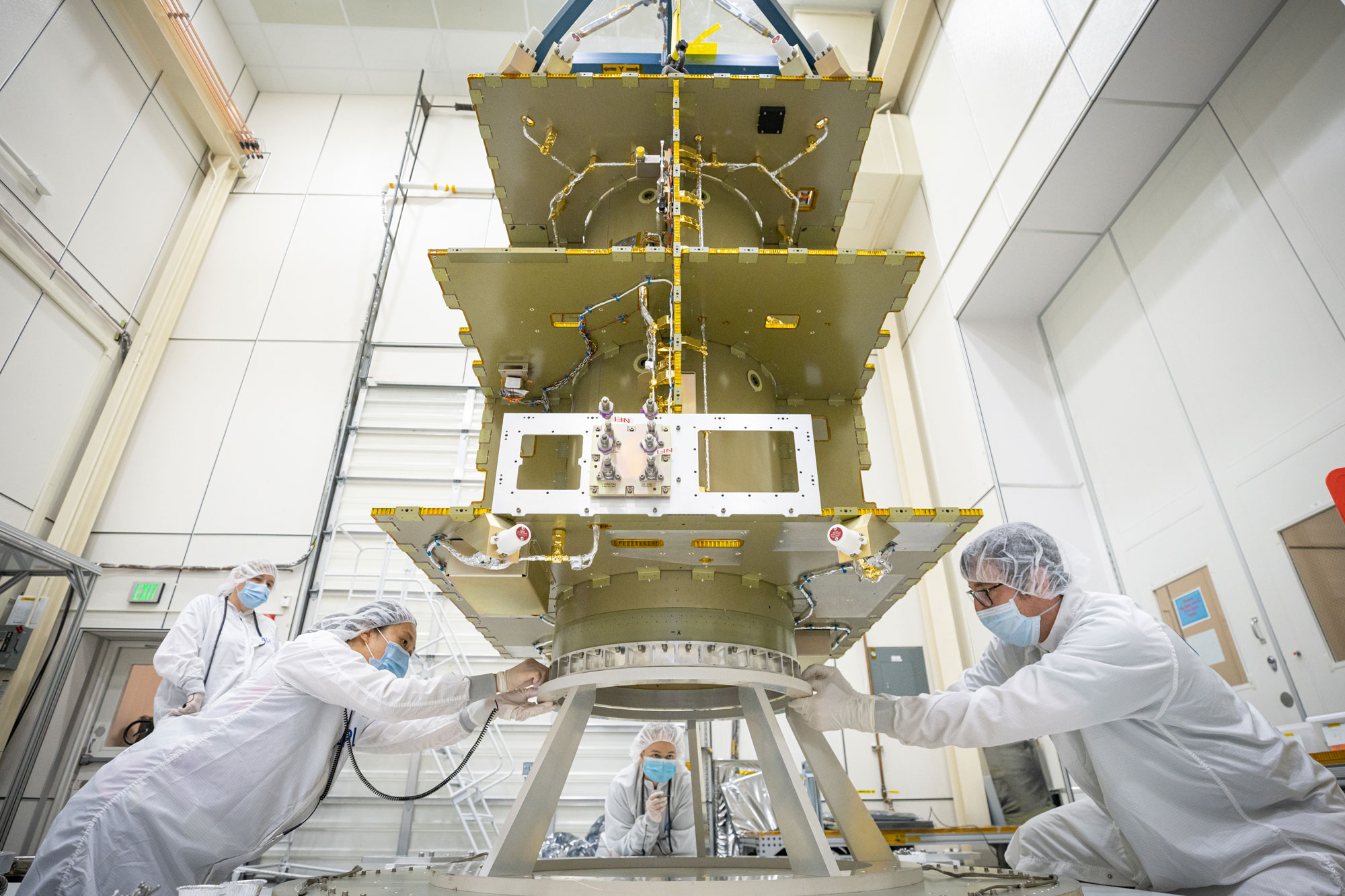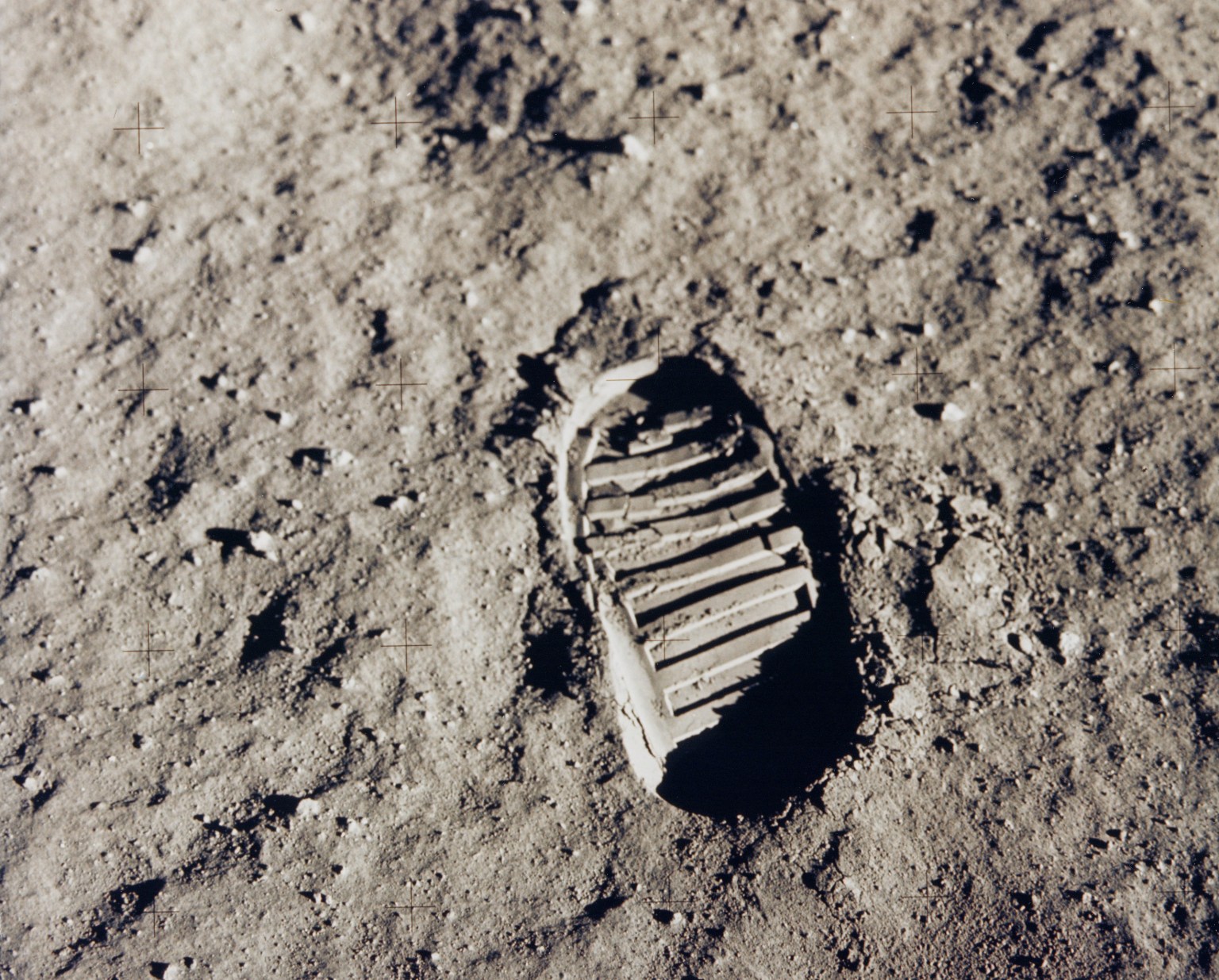On May 15, the primary structure for NASA’s Double Asteroid Redirection Test (DART) spacecraft returned to the Johns Hopkins University Applied Physics Laboratory (APL). Now equipped with its chemical propulsion system and elements of its electrical propulsion system – installed at Aerojet Rocketdyne in Redmond, Washington – the spacecraft will remain at APL through final assembly and prelaunch testing.

The DART Integration and Test team greeted the truck carrying the refrigerator-sized structure as it arrived at APL after its cross-country trip. The highly anticipated “package” was moved to a clean room on campus, where the spacecraft will eventually be outfitted with its critical operating systems and its lone instrument – the Didymos Reconnaissance and Asteroid Camera for Optical navigation (DRACO) – in the coming months.
“This milestone is the culmination of four years of work,” said Jeremy John, DART’s lead propulsion engineer at APL. “These last few months have presented several unexpected challenges that the teams at APL and Aerojet Rocketdyne were able to overcome successfully on the way to completing the propulsion system integration and acceptance testing.”
Credits: JHU Applied Physics Laboratory
APL— which designed and is building and managing the DART mission for NASA — has spent the last month installing the electrical harness and subsystems onto the spacecraft panels, as well as testing the spacecraft’s avionics and the software for its Small-body Maneuvering Autonomous Real Time Navigation (SMART Nav) system. The DART team also received and tested the power processing unit for NASA’s NEXT-C ion thruster, which will be demonstrated on the DART mission.
The Lab has remained operational during the COVID-19 outbreak to continue to support critical work onsite, including the DART mission ahead of its 2021 launch. The mission’s I&T team has taken additional safety precautions, including staggering shifts to limit the number of people working together at once and wearing additional protective gear when operating onsite.
Launching in 2021, DART will demonstrate the kinetic impact technique – piloting a spacecraft at roughly 4 miles (about 6.5 kilometers) per second into the binary asteroid system Didymos, and targeting Didymos B, the small moon of Didymos A. The asteroid pair will be nearly 7 million miles (11 million kilometers) from Earth when DART arrives; the demonstration presents no threat to our planet, but will occur in an ideal place for ground-based observers to collect data.
“DART is the first ever mission to demonstrate kinetic impact deflection” said Andrea Riley, DART program executive at NASA Headquarters. “This incredible mission will utilize innovative technologies as it autonomously navigates toward the Didymos system, and it is an integral part of NASA’s planetary defense program.”
After a 14-month cruise, DART will guide itself toward Didymos B using the APL-developed autonomous SMART Nav guidance and control system, making impact in September 2022. By changing the smaller asteroid’s orbit, DART will test one proposed planetary defense method.
DART will launch on a SpaceX Falcon 9 rocket from Vandenberg Air Force Base, California, in late summer 2021. It is the first flight mission specifically built for NASA’s Planetary Defense Coordination Office.
For more information about NASA’s Planetary Defense Coordination Office, visit:
https://www.nasa.gov/planetarydefense
-end-
Grey Hautaluoma / Joshua Handal
Headquarters, Washington
202-358-0668 / 202-358-2307
grey.hautaluoma-1@nasa.gov / joshua.a.handal@nasa.gov
Justyna Surowiec
Johns Hopkins Applied Physics Laboratory
240-228-8103
Justyna.Surowiec@jhuapl.edu
Written by Justyna Surowiec, Johns Hopkins Applied Physics Laboratory































